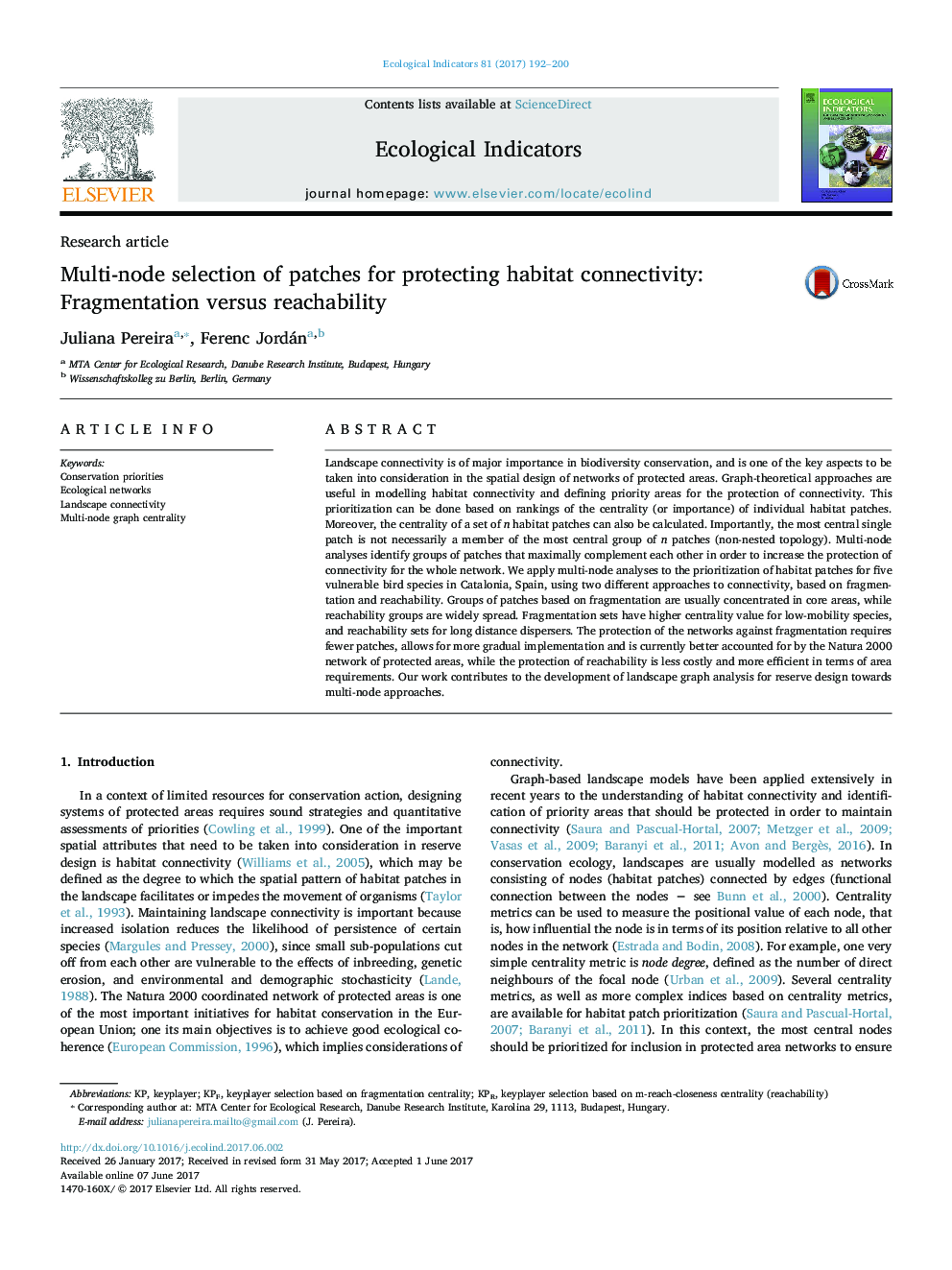| Article ID | Journal | Published Year | Pages | File Type |
|---|---|---|---|---|
| 5741423 | Ecological Indicators | 2017 | 9 Pages |
â¢The connectivity of habitat networks is critical for many species.â¢Network models help to identify key habitat patches.â¢We compare two multi-node approaches: fragmentation and reachability.â¢Fragmentation is crucial for low-mobility species and requires fewer patches.â¢Reachability is more useful for high-mobility species and uses less area.
Landscape connectivity is of major importance in biodiversity conservation, and is one of the key aspects to be taken into consideration in the spatial design of networks of protected areas. Graph-theoretical approaches are useful in modelling habitat connectivity and defining priority areas for the protection of connectivity. This prioritization can be done based on rankings of the centrality (or importance) of individual habitat patches. Moreover, the centrality of a set of n habitat patches can also be calculated. Importantly, the most central single patch is not necessarily a member of the most central group of n patches (non-nested topology). Multi-node analyses identify groups of patches that maximally complement each other in order to increase the protection of connectivity for the whole network. We apply multi-node analyses to the prioritization of habitat patches for five vulnerable bird species in Catalonia, Spain, using two different approaches to connectivity, based on fragmentation and reachability. Groups of patches based on fragmentation are usually concentrated in core areas, while reachability groups are widely spread. Fragmentation sets have higher centrality value for low-mobility species, and reachability sets for long distance dispersers. The protection of the networks against fragmentation requires fewer patches, allows for more gradual implementation and is currently better accounted for by the Natura 2000 network of protected areas, while the protection of reachability is less costly and more efficient in terms of area requirements. Our work contributes to the development of landscape graph analysis for reserve design towards multi-node approaches.
